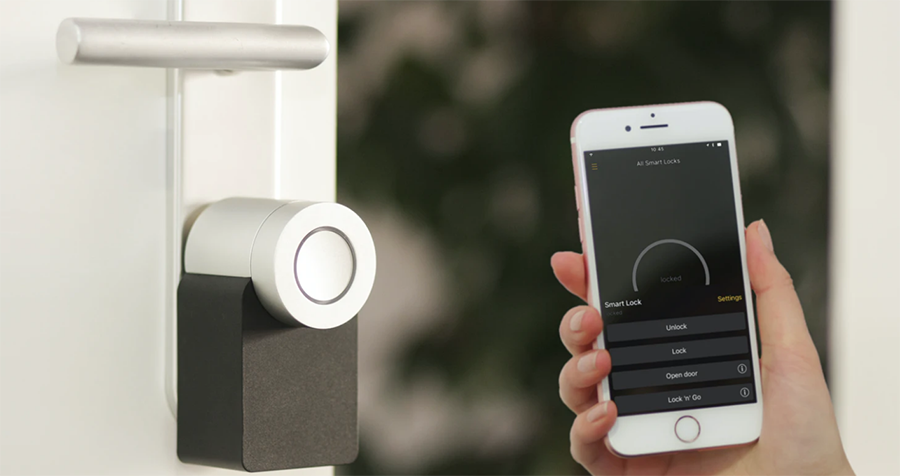
Source: Envato
Looking back at how technology has advanced and revolutionized how people streamline their work, it now feels like eons ago that businesses organized their offices in an antiquated way. In today’s article, we will take a closer look at the top 5 trends expected to change the future of employee experience.
Back in the day, companies had a very straightforward approach where employees had their own office space, desk, computer, and other required supplies. However, times have changed, and this strategy may no longer be the most effective one.
After coping with the initial shock of COVID-19, business leaders have spent much of the year solving challenges and striving to stay one step ahead of global trends. The struggle is real – but many companies have managed pandemic work-life with grace, ensuring business continuity and uncovering uncharted territory by instituting technology and new processes almost overnight.
The workforce is more mobile than ever. Evolving technologies have made this possible – perhaps in the previous era, employees were required to be in the office to access all the essential files, but that’s no longer necessary. As we look forward to the future, it’s to prepare and embrace a new set of challenges and opportunities, especially when it comes to employee experience.
5 Trends Expected to Shape the Future of Employee Experience
What can we expect in the upcoming months and years? Let’s take a look at the top five predictions to help you begin preparing for the future of employee experience.
Companies will focus more on creating a more holistic remote work experience
Remote work was still growing in popularity even before the pandemic forced organizations to send their non-essential employees home. According to a survey, 66% of companies in 2019 allowed employees to work from home, at least part-time, and while 16% were fully remote.
Gartner’s survey anticipates that almost over 40% of employees will work from home after the pandemic.
As governments mandated stay-home policy to contain the virus, even companies who didn’t offer remote work options were forced to adopt a work from home policy.
As a result, companies across the globe heavily invested a lot of time, effort, and budget in creating long-term remote work solutions. Now that businesses have overcome their initial hurdle, like how to communicate with employees in a virtual setting, the next step would be to create a more enjoyable work from home experience. It means providing an allowance for ergonomic chairs, better deks, or even gym memberships while also being able to track employees’ work rates.
More emphasis on health and wellness
In addition to solidifying remote work as a norm, the COVID-19 pandemic has also shone a light on the importance of hygiene and safety in the workplace. As some people return to their customary way of work at the office, many organizations have committed to routine sanitation and better air-filtration systems.
According to a Mckinsey survey, a staggering 83% of executives said they would consider hiring additional workers for health and safety roles, including 73% who would hire professionals to manage sanitation measures, building maintenance, and physical distancing.
After all, containing the spread of germs, whether it’s the Coronavirus or common flu, makes good business sense. Healthier employees tend to be more productive and efficient.
The mental well-being of employees is also crucial. While many organizations are already addressing this issue, in the future, we can expect employers to put more emphasis on the employees’ mental well-being as well. This includes providing support services, such as counseling, as well as end of life services such as will and trust writing. These sorts of support can help organizations to recognize and address employee burnout before it impacts their productivity.
Companies will make more efforts on improving diversity and inclusion
In recent years, especially these past few months, organizations have been re-evaluating their culture and recruitment process to support more diversity and inclusion in their workforce. Leaders acknowledge that hiring employees with more diverse backgrounds and experiences fosters innovation, improves employee satisfaction and increases profits.
According to another study by McKinsey, organizations in the top 25th percentile with more diverse gender at the C-suite level were 21% more likely to earn above-average profits in2017, while companies with executive teams ethnically and culturally more diverse were 33% more likely to see increased profits.
Of course, becoming an inclusive organization takes more than just hiring diverse candidates. The general public and employees expect companies to devote more resources to support anti-racism and cultural sensitivity both inside and outside the organization. Companies that make bold promises about diversity and inclusion will need to ensure that their actions reflect it.

Source: Envato
Work from home could increase gender equality
According to BBC Worklife, remote work could increase gender equality. Providing flexibility to employees in choosing when and where they work can trigger gender equality in two ways. First, research says that remote work can help mothers find a balance between work and family responsibilities, which makes them less likely to sacrifice one for the other.
Second, data collected during this pandemic suggests that fathers are more like to be involved when they are working from home. Apparently, more couples are sharing responsibilities equally than they did before. Fathers are participating more in household chores and sharing family responsibilities. If companies offer remote work opportunities after the pandemic, more women will probably have a level playing field.
Employers will more likely adopt digital workplace technology
2020 will always be remembered as the year that halted travels and limited physical interactions. Suddenly, in a matter of weeks, organizations rapidly accepted digital initiatives and transformed in a way that was probably on hold or planned for later. IT and business leaders were largely responsible for driving this digital transformation onward and ensuring employees are well supported while working from home.
The adoption rate for technology has set a new precedent. We expect this acceleration will continue in the upcoming years, especially when it comes to solutions that keep the workforce connected. Progressive companies will adopt solutions that enable them to integrate and streamline multiple processes rather than navigating through several disparate systems.
For example, adopting facility management software, especially for organizations that run operations at multiple facilities. Such solutions can handle space reservations, service requests, and internal communications while relaying facility utilization data to managers. Employers can delegate tasks and monitor all current operations occurring at multiple locations in real-time. Employees would not have to worry about running around from place to place because they can access all information with their mobile devices. Employers can ensure that their facilities are safe, comfortable, and fit for the purpose while allowing them to establish planned, routine, and preventative maintenance procedures.
The future of employee experience is flexibility
It hasn’t been good a year, but it has been a year where we witnessed a tremendous transformation. The pandemic forced workplace leaders to think outside the box and develop unique solutions. It has pushed everyone to be flexible in ways they couldn’t have imagined, and it has changed the way people communicate or collaborate. As we look ahead, there are plenty of ways to create an environment that helps employees strive. Do you think your organization is also contributing to the transformation and shaping the future of employee experience?
Author Bio: Riyan N. Alam is currently working as a Digital Marketing Analyst for M2SYS Technology, a cloud-biometric company. As a content writer, Riyan covers topics related to HIPAA compliance, facilities management, and patient identification, and frequently blogs in RightPatient and CloudApper.










